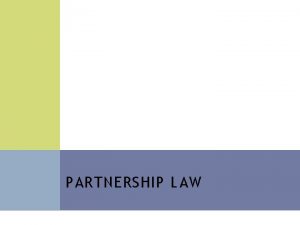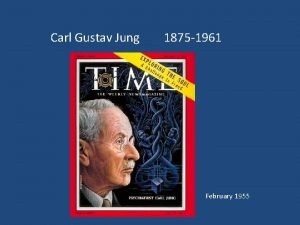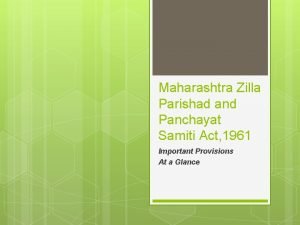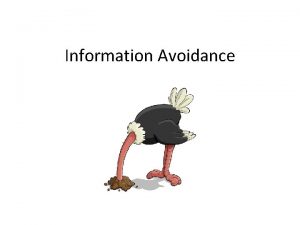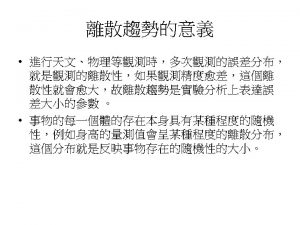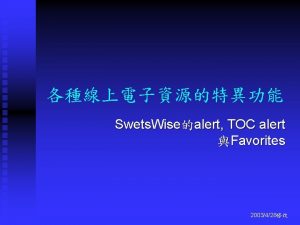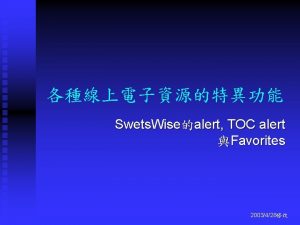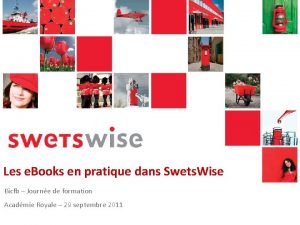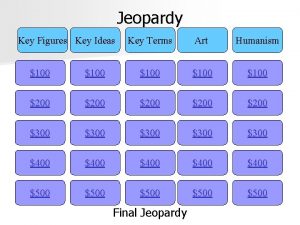Swets et al 1961 Key ideas continuity in















- Slides: 15

Swets et al (1961)

Key ideas • • continuity in stimulus-induced mental states variability in these states sensitivity (d’) role of prior probability and payoffs bias, criterion… Bayesian inference normative/optimal model, ideal observer

Your questions • How to get expected ROC given hypothetical underlying distributions? • What is the meaning of the ‘spread’ or ‘variance’, and how does this relate to performance? • What is ‘beta’ exactly and how does it relate to area under curve? • How are ROC curves generated from a rating experiment? • How is the prior and/or placement of the criterion determined by the subject? Is learning involved? If so in what way?

More questions • When do we stay with a theory even if it isn’t a perfect fit and when do we reject it and seek another theory? • How was it that the authors were able to reject the threshold theory even when their own data were and only so-so fit to their own theory? • How do we generalize given the large individual differences in studies such as these? • How do we distinguish between signals lost in noise and signals that decay before they can be reported?

Plan • • • Go over the basic elements of theory Generate a hypothetical ROC curve Consider effect of prior and payoff Consider effect of unequal variance Consider the data reported in the experiments

Key Concepts • Prior p(SN), p(N) • Likelihood f. SN(x) = p(x|SN), f. N(x) = p(x|N) • likelihood ratio = f. SN(x)/f. N(x) • Posterior p(SN|x), p(N|x) • Criterion, Beta • [Maximizing strategy inherent in model vs. probability matching]








Subliminal Perception? • “It may be, therefore, that subliminal perception exists only when a high criterion is incorrectly identified as a limen. ”

More questions • When do we stay with a theory even if it isn’t a perfect fit and when do we reject it and seek another theory? • How was it that the authors were able to reject the threshold theory even when their own data were and only so-so fit to their own theory? • How do we generalize given the large individual differences in studies such as these? • How do we distinguish between signals lost in noise and signals that decay before they can be reported?
 Swets blackwell
Swets blackwell Absolute continuity implies uniform continuity
Absolute continuity implies uniform continuity Key partners business model canvas
Key partners business model canvas Contoh bisnis model canvas makanan pdf
Contoh bisnis model canvas makanan pdf Ideas have consequences bad ideas have victims
Ideas have consequences bad ideas have victims Los deseos ridículos preguntas y respuestas
Los deseos ridículos preguntas y respuestas Wong peng yuen v senanayake
Wong peng yuen v senanayake Apprentice act 1961
Apprentice act 1961 Section 31 of indian partnership act
Section 31 of indian partnership act Nfpa 1961
Nfpa 1961 1961 viyana sözleşmesi
1961 viyana sözleşmesi Conventia de la viena 1961
Conventia de la viena 1961 Claes oldenburg pastry case i 1961 62
Claes oldenburg pastry case i 1961 62 1955-1875
1955-1875 Maharashtra zp and panchayat samiti act 1961
Maharashtra zp and panchayat samiti act 1961 Stigler 1961
Stigler 1961








